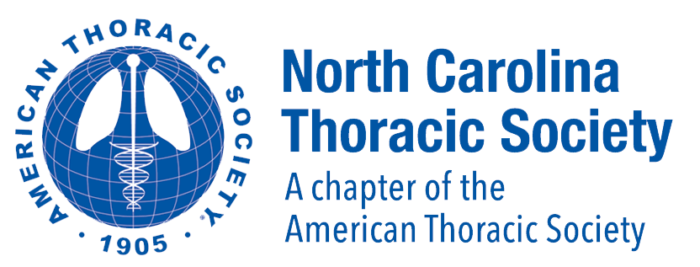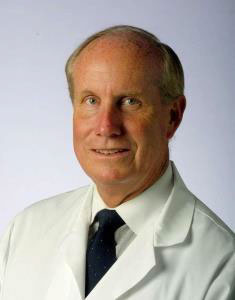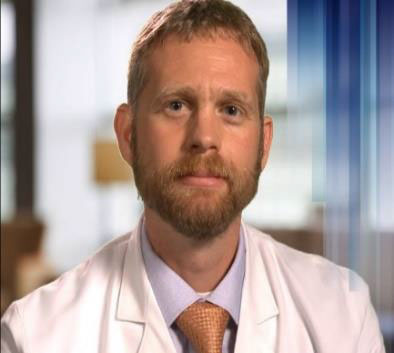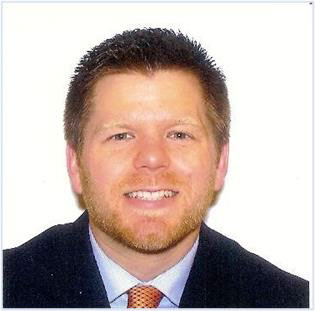“Advancing Lung Health in North Carolina”

Jason W.W. Thomason, M.D. – Message from the President
Greetings again from the North Carolina Thoracic Society (NCTS)! All of us at NCTS hope that this newsletter will continue to provide worthwhile clinical information for you, as well as enhance a sense of community among all of us involved in the delivery of Pulm/CC/Sleep medicine across our great state. Understanding that this season is always the busiest of the year, we have intentionally included just two very pertinent and up to date reviews coupled to some timely information with regard to NCTS proceedings this year. In addition, because we represent academic and community physicians as well as fellows in training and pulmonary allied health professionals, we have included some brief bios of persons attending our annual meeting.
Our goals are to welcome and encourage everyone involved in the delivery of care to patients with lung disease in North Carolina. Those of us who have actively participated in the NCTS for the past two years have already seen very tangible and direct benefits to our patients. There is no limit to the positive impact that can be created by the formation of true friendships and collaborations with like-minded and local healthcare professionals.
In this our second full year of operation, we feel very fortunate to continue to build momentum from our early achievements such as the Dec 8, 2018, NCTS educational conference in Chapel Hill. To maintain and grow this success, we hope that you will seriously consider joining for only $50 per year. You can go to our website – www.NCTHORACIC.org – or this direct link: https://www.thoracic.org/members/chapters/thoracic-society-chapters/north-carolina/
Regardless of membership status, we would love to see you at this year’s annual education conference on November 16th in Charlotte.
Warmest regards,
Jason
Important Upcoming NCTS Events
1. Multiple upcoming statewide lectures:
“Lung Cancer Update for Primary Care” Sept 17, Winston Salem and October 10, Bolivia, NC (others to be announced)
Check the NCTS website for more details on specific dates/times
2. Save the Date:
NORTH CAROLINA THORACIC SOCIETY’S ANNUAL EDUCATION CONFERENCE

Saturday November 16, 2019
The Speedway Club at Charlotte Motor Speedway
5555 Concord Parkway South, Concord NC

This daylong educational conference is intended for clinicians, researchers, and others involved in lung health. Your colleagues from across the state will provide up-to-date presentations on a number of important topics, including clinical updates and year in review. Pulmonary fellow presentations are also included. Our program will begin with a keynote speaker from Vanderbilt University, Wes Ely, MD who will provide a cutting edge lecture in critical care medicine. To attend this meeting, you do not have to be a member of ATS or NCTS.
3. Call for Nominations:
We are seeking nominees for the North Carolina Thoracic Society Clinician of the Year award. Please contact Jason Thomason, MD. Last year’s very deserving awardee was Dr. Ed Haponik of Wake Forest University.
4. White Coat Wednesdays
The North Carolina Medical Society helps facilitate White Coat Wednesdays during sessions of the General Assembly. Great opportunity to meet with NC legislators to advocate for lung health. www.ncmedsoc.org/advocacy/legislative-issues/white-coat-wednesdays
5. Join Us on Facebook ANYTIME!!

Literature Review – Low Tidal Volumes for the Non-ARDS Patient?
Neil MacIntyre MD
Duke University Pulmonary
Over the last two decades, the approach to providing optimal positive pressure mechanical ventilation (PPMV) has shifted dramatically. Up until the late 1990s, the primary goal of PPMV was to optimize gas exchange. The major “harms” from PPMV were felt to be barotrauma (eg pneumothorax) from airway pressures exceeding 50 cm H2O, hemodynamic compromise from excessive PEEP and oxygen toxicity. Starting with elegant animal studies in the 1980s and culminating in landmark clinical trials in ARDS patients in the first part of the 21st century it became clear that “Ventilator Induced Lung Injury” (VILI) resulted from end-inspiratory transpulmonary pressures exceeding the normal physiologic maximum of 25-30 cm H2O, tidal volumes exceeding the normal physiologic range of 4-8 ml/kg ideal body weight, and PEEP levels insufficient to prevent repetitive collapse-reopening of alveolar structures (1). Today in ARDS patients the focus is now on lung protection with the acceptance of adequate, rather than maximal, gas exchange.
An important concept in VILI is that it is a regional phenomenon, occurring primarily in the “healthier” regions of the lung into which the bulk of a normal global tidal volume will distribute. This causes excessive regional tidal stretching (dynamic strain) (2). More recently, this concept has led to the notion that applied tidal volumes perhaps should be scaled to functional lung size (actual FRC) as opposed to ideal lung size (ideal body weight – IBW). A practical approach to this is to use compliance as a surrogate for functional lung size and use driving pressure (DP = tidal volume/compliance) to guide tidal volume settings.
As noted above, most of the supporting evidence for using lung protective strategies have come from studies in ARDS. However, healthier lung units that are at risk for VILI exist in most lung diseases. It would thus seem reasonable to invoke lung protective strategies in virtually every patient requiring PPMV. Over the last few years, this has been extensively studied in normal lungs in the operating room and a large meta-analysis of patients undergoing general surgery found a dose-response relationship between the rate of post-operative pulmonary complications and increasing tidal volume (3).
It would make sense that if larger tidal volumes for the short duration of a surgery can cause VILI in patients without any acute pulmonary process that the same would also be true for patients in the ICU who do not have ARDS. Two large reviews of a number of clinical trials support this concept (4). However, a recent large trial (PReVENT) challenged these conclusions (5). In this trial, over 800 non-ARDS patients requiring PPMV were randomized to tidal volume settings of 4-6 ml/kg IBW vs 8-10 ml/kg IBW. The end result was similar outcomes in both groups. Importantly, it should be noted that the actual mean difference between tidal volumes in the two groups was small (< 3 ml/kg IBW).
There is always concern about potential downsides to small tidal volume strategies – discomfort, atelectasis, more sedation needs. However, the bulk of the evidence in 2019 favors the use of lower tidal volumes to improve outcomes in mechanically ventilated patients with a variety of diseases that are not ARDS. It thus makes sense to limit tidal volumes in virtually all forms of respiratory failure.
1. Beitler, J.R., A. Malhotra, and B.T. Thompson, Ventilator-induced Lung Injury. Clin Chest Med, 2016. 37(4): p. 633-646.
2. Chiumello, D., et al., Lung stress and strain during mechanical ventilation for acute respiratory distress syndrome. Am J Respir Crit Care Med, 2008. 178(4): p. 346-55.
3. Serpa Neto, A., et al., Protective versus Conventional Ventilation for Surgery: A Systematic Review and Individual Patient Data Meta-analysis. Anesthesiology, 2015. 123(1): p. 66-78.
4. Serpa Neto, A., et al., Association between use of lung-protective ventilation with lower tidal volumes and clinical outcomes among patients without acute respiratory distress syndrome: a meta-analysis. JAMA, 2012. 308(16): p. 1651-9
5. Simonis FD, Serpo Neto A, Buinnekade JM, et al (PReVENT Investigators). Effect of a low vs intermediate tidal volume strategy on ventilator free days in ICU patients without ARDS: a randomized controlled trial. JAMA 2018;320:1872-80

Bronchoscopic Lung Volume Reduction (BLVR): What should we be telling our patients?
Tim Scialia, MD
Duke University Pulmonary
Because emphysema results from the destruction of alveolar spaces, pharmacological therapies have limited impact on clinically meaningful outcomes in those with severe emphysema. In this context, the recent approval of BLVR with the Zephyr Endobronchial Valve (EBV) is welcome news. It culminates a decade long attempt to try to match the success of Lung Volume Reduction Surgery (LVRS) in a selected population of severe emphysema patients while minimizing perioperative morbidity. As with any new therapies, understanding patient selection, procedural complications, and the anticipated benefits is of paramount importance.
In earlier studies of BLVR, benefits were mostly limited to those with an intact fissure suggesting that collateral ventilation limits the effectiveness of the procedure. (1) Most recently, the LIBERATE trial incorporated collateral ventilation assessment in patient selection placing valves only in patients with “collateral negative ventilation”. (2) Otherwise, patients who underwent BLVR were strikingly similar to those in the original NETT trial who obtained a mortality benefit (FEV1 28% predicted; RV 225% predicted; and DLCO 34% predicted). (3) The primary endpoint (>15% improvement in post-bronchodilator FEV1 % predicted at 12 months) was achieved in nearly 50% of patients undergoing BLVR compared to 17% of those received standard medical care. Pneumothorax occurred in a quarter of the patients (34/126; 26.8%) with 4 patients dying in the EBV group in the first 45 days. The study required a 5-day hospital stay.
It is important to note that LVRS remains the recommended choice for those who meet surgical criteria and is associated with improved mortality. For those from whom surgery is contraindicated or who decline a surgical option, BLVR with EBV would be an option in those with an intact fissure in the targeted lobe. There is emerging data that EBV placement may also be valuable in homogenous emphysema with an intact fissure as well. (4) I suspect patient’s preference will drive BLVR volume (even for those patients who are ideal surgical candidates) but complications are common and the procedure will not be “a walk in the park” for these patients. (5) Furthermore, surgical morbidity has likely improved in the 20 years since NETT was conducted and the findings that a single targeted lobe has benefits may further reduce surgical complications.
1. Sciurba FC, Ernst A, Herth FJ, et al. A randomized study of endobronchial valves for advanced amphysema. N Engl J Med. 2010; 363: 1233-44.
2. Criner GJ, Sue R, Wright S, et al. A multicenter randomized clinical trial of Zephyr endobronchial valve treatment in Heterogeneous Emphysema (LIBERATE). Am J Respir Crit Care Med. 2018; 198: 1151-64.
3. National Emphysema Treatment Trial Research Group. A randomized trial comparing lung-volume-reduction surgery with medical therapy for severe emphysema. N Engl J Med. 2003; 348: 2059-73.
4. Gordon M, Duff S, Criner G. Lung volume reduction surgery or bronchoscopic lung volume reduction: is there an algorithm for allocation. J Thora Dis. 2018; 10 (Suppl 23): S2816-23.
5. Mansfield C, Sutphin J, Shriner K, et al. Patient preferences for endobronchial valve treatment for severe emphysema. Chronic Obstr Pul Dis. 2019; 6: 51-63.
NCTA members attending the 2018 annual meeting in Chapel Hill

Private Practitioner
Thomas P Stern, MD, MS, FAASM, FCCP Advanced Respiratory and Sleep Medicine; www.arsmnc.com – Huntersville, NC
“I certainly enjoyed being at NCTS! I really miss interacting with other pulmonologists.”

Sharon Cornelison, RCP, RRT-NPS Pulmonary Transitional Care Specialist for Cardiac & Pulmonary Rehabilitation and COPD Pathway Clinic for Wake Forest Baptist Health in Winston-Salem
“Attending the annual meeting was a great learning experience, as always. I especially enjoyed Dr. Wendy Moore’s lecture on Asthma and New Biologic Therapies”.

Chad Kloefkorn, MD, Pulmonary & Critical Care Fellow, Wake Forest School of Medicine, Winston Salem, NC
“The North Carolina Thoracic Society Meeting was a great way to learn interesting topics in pulmonary medicine, network, and discover the incredible experts we have in various subspecialties of pulmonary right within our own state”
Officers – North Carolina Thoracic Society
President: Jason W.W. Thomason, MD, FCCP, D-ABSM; Winston-Salem. Salem Chest Specialists (jwwt@triad.rr.com)
Vice President: Alex Sy, MD, MBA, FCCP, FACP, FAASM; Winston Salem. Wake Forest Division of Pulmonary Critical Care and Sleep Medicine, (asy@wakehealth.edu)
Secretary/Treasurer: Vikas Pathak, MD; Raleigh Wake Med Physician Practices (drvikaspathak@gmail.com)
Chapter Councilor: Christina Bellinger, MD; Winston-Salem. Wake Forest Division of Pulmonary Critical Care and Sleep Medicine (Cbelling@wakehealth.edu)
Executive Director – Roy Pleasants, PharmD ncthoracicsociety@gmail.com
